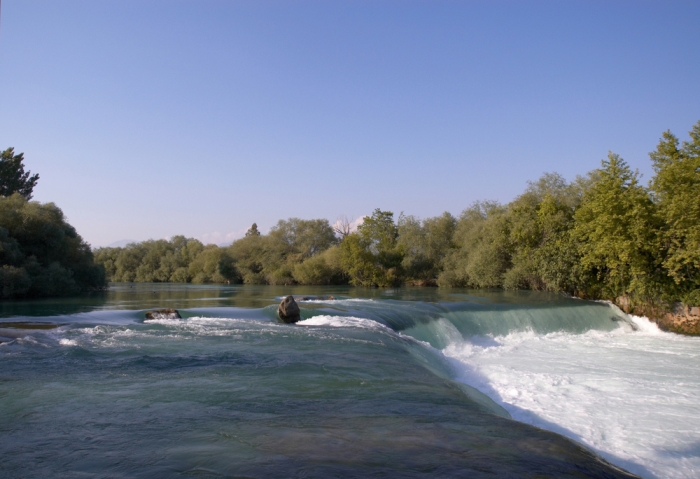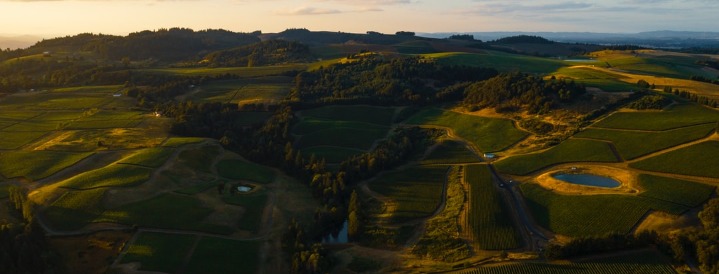2025 Salem OR Visitors Guide
Oregon’s capital city, Salem, boasts one of the premier locations in the state. It sits on the 45th parallel in the heart of the Willamette Valley, a 100 mile-long lowland stretch of Interstate 5 between the Cascade Mountains and the Lower Coast Range. It takes only an hour’s drive to reach Portland, Eugene or the Oregon coast. Known for world-class wines, breathtaking gardens, and fertile land, residents of the area enjoy the family-oriented atmosphere and revitalized downtown area.
Salem Fun Facts
- City population: 135,000
- Metro population: 2.4 million
- Size: 40.8 square miles
- Average temperature (January): 46.9 (max) / 37.0 (min) F
- Average temperature (July): 81.6 (max) / 50.7 (min) F
Salem OR Attractions
Salem boasts a variety of attractions for all ages and interests. As the heart of the Oregon wine country, many visitors enjoy touring the wineries and enjoying the majestic French-esque landscapes and delicious wine. Several wineries feature activities for children; the Cherry Hill winery houses a dude ranch with a variety of outdoor activities for families including cabins for overnight lodging.

Families may choose from a variety of educational and fun activities in Salem. A.C. Gilbert’s Discovery Village is a children’s museum located on Salem’s waterfront, next to Salem’s Riverfront Carousel. It provides innovate and stimulating educational experiences that spark children’s natural curiosity. Other local activities include the Enchanted Forest and Thrill-Ville USA Amusement Park. The Enchanted Forest is a theme park that has enchanted children from all over the northwest for generations. Children will stroll through Storybook Lane and watch their favorite storybook characters come to life. It features several rides, a haunted house, and a comedy theatre too. Thrill-Ville USA houses a variety of amusement rides and waterslides, fun for all ages.
Salem is not without its share of historical locations and magnificent gardens. The area’s most prized historic homes include Deepwood Estate and the Bush House. The Mission Mill Museum is another must-see for any visitor or new resident. The museum takes visitors through the history of missionary Jason Lee and his settlers. Buildings on the property include mission houses, an Oregon Trail settler’s house, a historic church, and the structures, equipment and original water-powered turbine of the Thomas Kay Woolen Mill.
Salem Recreation
When many people think of Oregon, they envision majestic hikes, bountiful fishing expeditions, walks along gorgeous beaches and skiing on fresh snow. Salem is at the hub of the phenomenal outdoor recreation in the beaver state. A plethora of recreation activities is located right in Salem, or a short drive away.
The Willamette River runs right through the heart of Salem and hosts many activities such as fishing, boating or a relaxing day of sun on the shore. This river is unique because it is one of few in the nation that runs north to south. A sunny day on the Willamette River wouldn’t be the same without the sound of jet skis gliding along the Willamette River and happy faces on inner-tubers or the calls of a “fish on” by a fisherman.
Hikers or campers would be remised to not visit Silver Falls State Park, about 25 miles east of Salem. This temperate rain forest features 10 waterfalls ranging from 27 feet to 177 feet. Visitors will enjoy the amphitheater-like surrounding when walking behind the falls to feel the misty, crisp spray. Detroit Lake is another hot spot for campers, hikers and water enthusiasts, located about 50 miles east of Salem.
Sports fans can watch a Salem/Keizer Volcanoes baseball game or catch a match in a variety of sports at any of the local colleges. Home games for the Portland Beavers baseball team or Portland Winterhawks hockey team are only an hour’s drive away.
Salem OR Festivals
Salem hosts a variety of festivals all year round; music, art, agriculture or a general appeal. The Oregon State Fair is the largest annual festival, beginning in August, and has a variety of attractions that would appeal to anyone. In addition to a theme park with exciting rides, the fair features a massive exhibitor’s area selling goods from art to clothing to personal wellness. There are also a variety of garden exhibits as well as animals and livestock competitions. The fair even draws internationally-renowned musical acts for daily concerts.
The World Beat Festival draws attendees regionally for its two-day program of international music, dance, food, hands-on crafts, and folklore. Other notable festivals include the Oregon Wine and Food Festival, the Bite of Salem, Oregon Ag Fest, PGE Festival of Lights Holiday Parade, Hoopla, Marion County Fair and the Mt. Angel Oktoberfest.
Salem Arts
Salem has a variety of theatres and art galleries to please any visitor. The Salem Art Association is housed at the Bush Barn Art Center and Sales Gallery at the historic Bush House. Visitors will enter the barn, formerly used to house farm equipment, and step into three contemporary exhibition galleries, a sales and rental gallery, gift shop and featured artist gallery.
The Historic Elsinore Theatre is another favorite of Salem locals and visitors alike. The theatre opened its doors in May of 1926 and was designed to resemble the castle in Shakespeare’s drama “Hamlet.” The theatre’s creator, George Guthrie, contracted with Portland architectural firm Lawrence and Holford to create the Tudor Gothic structure. The Elsinore quickly gained a reputation as the finest theater between Portland and San Francisco. The Elsinore currently features theater performances, movie nights and musical groups. Other local theaters worth attending are the Pentacle Theatre and Willamette University Theatre.
Just beyond the Salem city limits, there are numerous museums, art galleries, and other cultural attractions. Anyone interested in steam-run machines and farming equipment can’t afford to pass up the Antique Powerland Museum. The museum pays homage to weekend competitions in the 1950s and 1960s that showcased local farmer’s tractors and heritage apparatus. About 20 minutes west of Salem in Monmouth, visitors should attend the Jensen Arctic Museum. This museum is one of only two in the lower-48 states that is devoted solely to collecting, preserving and teaching about Arctic culture and ecology.
Salem Dining
Anyone dining in Salem may feel overwhelmed by the choices. Diners can embrace local specialties like baked salmon, berry pie, fresh produce or handcrafted ales, or experiment with eats from another culture. Restaurants range from gourmet to family-friendly to a local pub, each with its own charm.
Visitors wanting food with excursion should board the Willamette Queen sternwheeler cruise. This classic sternwheeler roams up and down the Willamette River near downtown Salem. Diners can choose from brunch, lunch or dinner cruises, or even reserve the entire boat for a special event.
Anyone wanting to dive into the famed Pacific Northwest brewery industry should not pass by the Ram Bighorn Brewery. It’s delicious food and friendly service are a perfect fit for its mouth-watering ales. The menu ranges from sandwiches to gourmet steak and seafood.
If seafood is the desire, the Eola Inn Riverview Restaurant overlooking the Willamette River is a great fit for anyone. This casual dining establishment features a restaurant, lounge, banquet room and patio. Delectable parmesan-crusted halibut washed down with an Eola Hills chardonnay is the perfect welcome for any visitor or new resident to Salem.
Communities in Salem Oregon
The Salem community is one that takes pride in supporting civic causes. With many people working or involved in government, and even more involved in charitable causes, the city’s livability is above the norm. Most neighborhoods, especially surrounding the downtown area, are a melting pot of various ethnic backgrounds. The quality of the home and income level differ from street to street. It’s not unusual to drive down a road of large, well-kept Victorian homes then turn to a road with smaller homes or manufactured homes. Outlying edges of Salem tend to be middle to the upper class with larger homes and further from downtown.
History of Salem OR
A local Indian tribe called “Kalapuva” settled the Willamette Valley approximately 10,000 years ago. The Indians called the area “Chemeketa,” a word that meant resting place. The tribe began dying out due to disease in the late 1700s. It was required to move to reservations in the coastal range in the mid-1800s because of a treaty with the federal government.
Trappers arrived nearly 200 years ago and began farming the valley’s rich soil. In 1834, a missionary leader named Jason Lee began to minister to the Indians. His group built a combination of sawmill and gristmill on what is now Mill Creek in 1841. The next year Lee’s group founded the first learning center west of the Rockies called the Oregon Institute, now Willamette University. After the mission dissolved in 1844, the townsite was built on the institute’s land. At that time the missionaries named the new town “Salem,” which is an anglicized form of the Hebrew word “shalom,” meaning peace.
Migration via the Oregon Trail took the Willamette Valley by storm beginning in 1843 due to the fact that each resident was promised 320 acres of free land through the Donation Land Law. Salem settlers began producing wheat, timber and other goods to be sent to California via Portland for the gold rush in 1848. This enabled Salem to prosper; building modern roads, mills, homes, and businesses.
A disastrous flood struck the valley in 1861, but Salem survived. The modern invention took hold of Salem in 1864 through the telegraph. Salem residents could receive news, such as the end of the Civil War, within minutes from the east coast instead of the accustomed months via covered wagon. In the same year, Salem became the official state capital instead of Oregon City, the former capital. Residents of the valley became more connected to their northern neighbor, Portland, through a train service that began in 1870. Willamette Valley residents became more accessible to each other with the first bridge across the Willamette River, which was constructed in 1886.
The latter end of the 19th century brought a revolution to the Salem area. Residents felt as though their thriving community was similar to that of a quiet New England country village. Churches, civic institutions and public buildings were quickly erected. The State Capitol building quickly became the premier landmark. Asahel Bush II, found of the first newspaper and bank in Salem, built his historic home on Mission Street south of town.
The current capitol building was built in 1938 after a fire destroyed to previous structures. The current building features a four-story modern Greek-style architecture, surrounded by a beautiful park. A 23-foot golden statue, the “Oregon Pioneer,” stands on top of the capitol overlooking Salem’s downtown area. The main entrance to the building contains a 106-feet tall rotunda with large murals depicting Oregon’s history.
